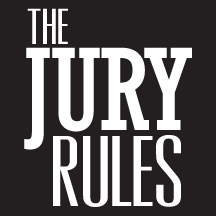
Published on January 11th, 2013 | by Trey Cox
[C]harts and diagrams designed to summarize or perhaps emphasize the testimony of witnesses are, within the discretion of the trial court, admissible into evidence. This assumes, of course, that the testimony summarized is admissible and already [&hellip... Read More →

Published on January 4th, 2013 | by Trey Cox
Lawyers need demonstrative exhibits so jurors can hear them. Today, jurors live in a grab-and-go world of CNN, USA Today, sound bites, commercials and one-page US magazine articles. In newsrooms, conference rooms and classrooms, key information [&hellip... Read More →

Published on December 28th, 2012 | by Trey Cox
To increase the power and persuasiveness of demonstrative exhibits use Rule 1006 to amplify and drive your point home. Summary exhibits can be made into demonstrative exhibits and are one of my personal favorites. They are [&hellip... Read More →

Published on December 21st, 2012 | by Trey Cox
The commonsense conclusion that demonstrative evidence makes a presentation more memorable is supported by science. For example, McGraw-Hill published the Weiss-McGrath study, which was designed to evaluate information retention1. The study compared retention of information presented [&hellip... Read More →

Published on December 14th, 2012 | by Trey Cox
Commentators offer many reasons why demonstrative evidence works, but it all starts with effective communication. In today’s Internet and sound bite world, we are conditioned, like Pavlov’s dogs, to receive information in short, quick bursts reinforced [&hellip... Read More →

Published on December 7th, 2012 | by Trey Cox
Every time you move, speak or breathe before a jury, your credibility is at stake. Yes, I am talking about your credibility. And, yes, I mean every time you do anything before a jury. Jurors flyspeck [&hellip... Read More →







